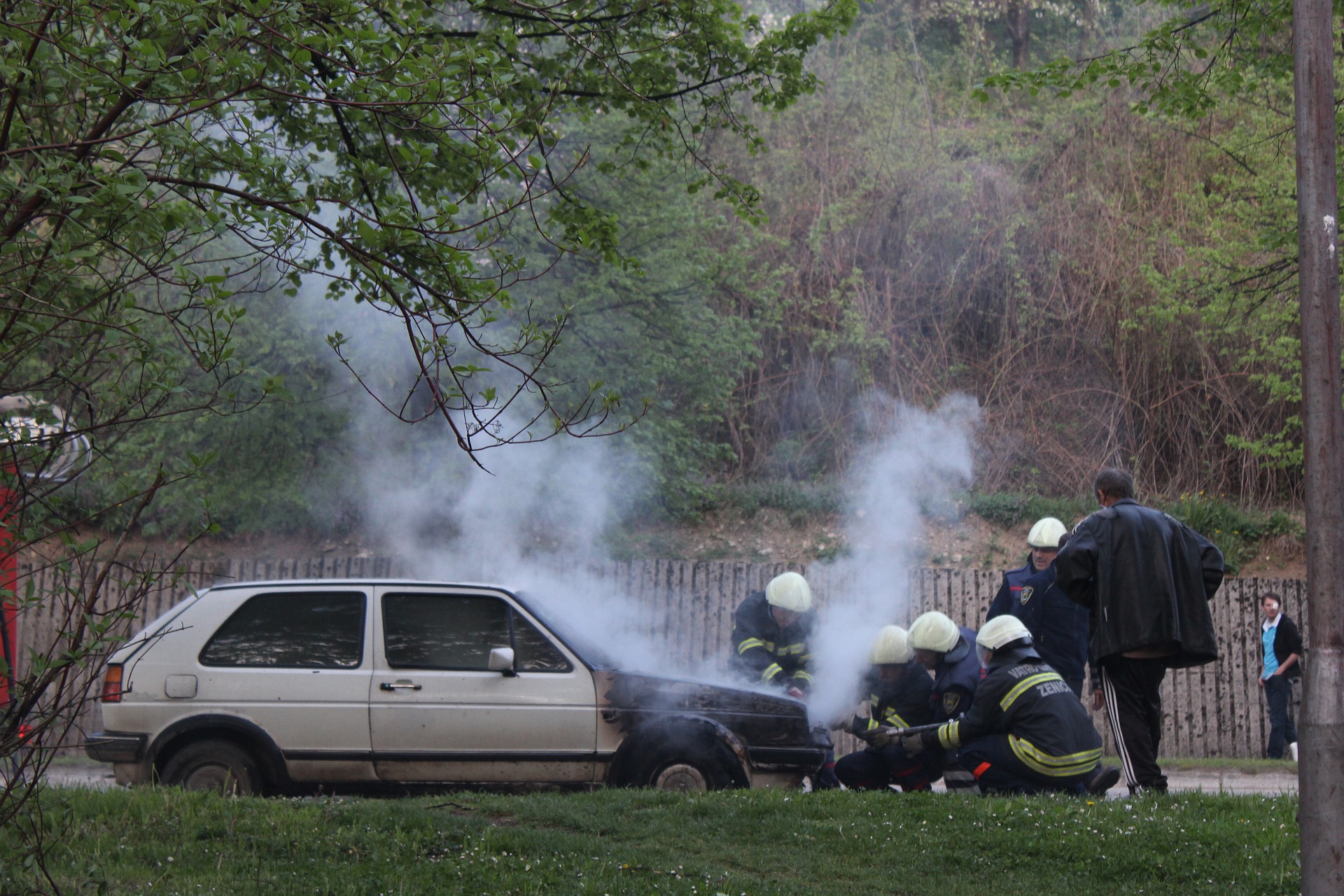A traffic signal violation is always a nuisance. It not only puts the life of the violator at risk, but also that of the other commuters traveling alongside. A single mistake can lead to fatalities that could have been easily avoided. Traffic signal violations are one of the major reasons behind road accidents and on-the-road fatalities. There are checks and measures to apprehend the trespassers, like real-time video surveillance which enables the police departments to catch the violator of traffic rules by the number plate of the vehicle. However, such measures are far from accuracy as there are often times that video cameras get dirty because of weather conditions, leading to blurred images. Also, speeding vehicles often whiz past the cameras, which makes recording of the vehicle number difficult. This necessitates the application of a more foolproof technology that can detect the trespassers with utmost accuracy.
Even if we keep jumping of traffic lights aside, there are times when vehicles encroach over the zebra crossing, beyond the stop line. Make a visit to India and witness the disregard of the stop line by the haughty drivers behind the wheels. This is where video surveillance cameras can be useful; however, during inclement weather, the surveillance system can face limitations.
This is where Radio Frequency Identification (RFID) Technology, in combination with Internet of Things can be instrumental to rein in the mushrooming menace of traffic lights violation and the consequential occurrence of accidents. In order to do this, it would be helpful as well as necessary to understand how these technologies work and how they are currently used. Such IoT-enabled systems will be helpful for the police force of the smart cities to collar the perpetrators and bring them to book, eventually making this system a deterrent to traffic lights violation and saving of many innocent lives in the smart cities.
Contactless surveillance enabled by RFIDs
Radio-Frequency IDentification (RFID) is the use of a wireless non-contact system that uses radio-frequency electromagnetic fields to transfer data from a tag attached to an object, for the purposes of automatic identification and tracking. Radio-frequency Identification (RFID) uses a semiconductor (micro-chip) in a tag or label to transmit stored data when the tag or label is exposed to radio waves of the correct frequency.
Some tags require no battery and are powered by the electromagnetic fields used to read them. Others use a local power source and emit radio waves (electromagnetic radiation at radio frequencies). The tag contains electronically stored information which can be read from up to several meters (yards) away. Unlike a bar code, the tag does not need to be within line of sight of the reader and may be embedded in the tracked object.
| Frequency range | Frequency | Passive read distance |
| Low Frequency (LF) | 120-140 KHz | 10-20 centimeters |
| High Frequency (HF) | 13.56 MHz | 10-20 centimetres |
| Ultra-High Frequency (UHF) | 868-928 MHz | 3 meters |
| Microwave | 2.45-5.8 GHz | 3 meters |
| Ultra-Wide Frequency (UWB) | 3.1-10.6 GHz | 10 meters |
Table 1: Frequency bands of Radio-frequency region
A radio-frequency identification system uses tags, or labels attached to the objects to be identified. Two-way radio transmitter-receivers called interrogators or readers send a signal to the tag and read its response. The readers generally transmit their observations to a computer system running RFID software or RFID middleware. Let’s see how the entire process works by going through the following points:
- The tag’s information is stored electronically in a non-volatile memory.
- The RFID tag includes a small RF transmitter and receiver. An RFID reader transmits an encoded radio signal to interrogate the tag.
- The tag receives the message and responds with its identification information. This may be only a unique tag serial number, or may be product-related information such as a stock number, lot or batch number, production date, or other specific information.

Figure 1: Representation of RFID system works [1]
The RFID tag is a miniature device which is attached to any object to be identified. As already mentioned, the RFID tag includes a small RF transmitter and receiver. An RFID reader transmits an encoded radio signal to interrogate the tag. RFID tags can be active or passive.
Electronic Product Code: It is a 96 bit code that helps to identify each TFID tag uniquely.

Figure 2: Electronic Product Code format [2]
- Header – Tag version number
- EPC Manager – Manufacturer ID
- Object class – Manufacturer’s product ID
- Serial Number – Unit ID
Preemptive traffic signal mechanism
Traffic signal preemption (also called traffic signal prioritization) is a type of system that allows the normal operation of traffic lights to be preempted, often to assist emergency vehicles. The most common use of these systems is to manipulate traffic signals in the path of an emergency vehicle, stopping conflicting traffic and allowing the emergency vehicle right-of-way, to help reduce response times and enhance traffic safety. Sometimes, signal preemption is also used at railroad grade crossings to prevent collisions, and by light-rail and bus rapid transit systems to allow public transportation priority access through intersections to ensure they remain on schedule and improve commute times.
Traffic preemption devices are implemented in a variety of ways. They can be installed on road vehicles, integrated with train transportation network management systems, or operated by remote control from a fixed location, such as a fire station, or by a 9-1-1 dispatcher at an emergency call center. Traffic lights must be equipped to receive an activation signal to be controlled by any system intended for use in that area. A traffic signal not equipped to receive a traffic preemption signal will not recognize activation, and will continue to operate in its normal cycle.
Working of RF traffic surveillance system
The radio-frequency enabled monitoring system, let’s call it ‘RF-Police system’, can be the next-generation method to nab trespassers of traffic lights. A database would have to be created, which would store the details (like name, address, mobile number etc.) of the owner of each and every vehicle in the city, with the RFID tag number serving as the primary key of each field in the database.
- The RFID readers under the road will be synchronized with the traffic lights and would get triggered as soon as the lights go red.
- Any vehicle which dares to cross the stop line (crossing the stop line when the lights are red is also a crime) will have its RFID number noted down by the readers. As a result the violator has been tracked.
- The RFID readers shall get deactivated as soon as the lights go green, only to get activated when the lights again go red.
- The RFID tag number, which has been recorded by the readers will be communicated to Control Station and would be recorded in the database, along with the date and the location of traffic lights violation.
- A penalty would be issued to the violator which would be communicated to him/her on his/her mobile phone.
This technique would discourage any further violation of traffic rules by the penalized person and would also not need the deployment of traffic police at the traffic lights to check the discussed problem, since everything would be done by the system itself.
It would also put an end to the tussle between the police and the violators, since the police every time needs to prove it to the defiant violator that he has done the crime. If the reader would have read the tag number that means the violation has certainly been done.
The system might fail to record an event in the case of a very fast moving vehicle. In that case an active tag may be used to help in faster detection. To counter this problem, multiple stop lines at a distance of 6 meters would be made. The RFID tags to be used are High Frequency tags, which have a range of about 3 meters. Hence, even if a car speeds over a stop line, the tags in the subsequent stop line would record the RFID tag data of the vehicle.

Figure 3: Representation of the passage of vehicle over multiple stop lines

Figure 4: 3 metre circular coverage area for each RFID reader between two stop lines
FLOWCHART

Figure 5: Flowchart for the RF-Police system
How RFID surveillance will transform traffic monitoring?
- The concept if implemented can act as a deterrent for the violators of traffic rules.
- Moreover, the system is unbiased and has low chances of damage being caused to it, since the RFID readers would be placed beneath the roads.
- There would be no chances of bribing the traffic police to avoid being penalized.
- The incidents of arguments of traffic rules violators with the traffic police would also reduce to zero. The system works electronically on the basis of radio frequency and hence is bound to be quite accurate in recording data.
RFID tags in cars would be embedded inside the smart number plates issued by the government of the nation and hence would be inaccessible to the car owner. Hence, there are very less chances of the RFID tag being deliberately tampered. The prevailing system of employing traffic policemen at each junction or having CCTV surveillance system at the traffic light junctions do solve the problem of traffic light violation to a great extent. Yet they suffer from some serious disadvantages of automation and reliability. Let’s have a look at the prevailing technologies and compare them with our proposed system.
| Vigilance technologies | Parameters of comparison | ||
| Cost of installation | Degree of automation | Reliability | |
| Manual vigilance by traffic policemen | High* | Low | Medium |
| CCTV surveillance | High | Medium | High |
| RF-Police system | Medium | High | High |
Table 2: Comparison of existing technologies with RF-Police system
*The cost of installation in case of manual vigilance by traffic policemen is the salary to be paid to each policeman at a traffic light junction.
The CCTV surveillance system is fully automatic at the location of their deployment. However, the system needs the employment of dedicated professionals at the control rooms who have to monitor the video coverage. However, RF-Police system needs not even an iota of monitoring by humans. The database is updated automatically at the control station and the tickets are issued to the violators electronically by mail or by SMS.
Possible Pitfalls in the radio-frequency surveillance system
The system might fail to record an event in the case of a very fast moving vehicle. In that case an active tag may be used to help in faster detection. However, the concept of multiple stop lines, as explained earlier in the paper in section V, would help in countering this menace.
The vehicles may not give way to an ambulance approaching from behind due to the fear of getting their tags recorded. In this case, preemptive traffic signal mechanism, as explained in section IV, has to be implemented alongside.
Final Thoughts
Radio-frequency surveillance has a number of advantages over the traditional traffic monitoring system. The world needs more of reliable mechanisms for deterring drivers from violating traffic signals. Careless drivers need to think twice before daring to jump traffic lights, while diligent drivers must feel safer while commuting on the road. And police also needs to have a foolproof evidence before penalizing a violator. The RF-surveillance system enabled with IoT will be the next digital transformation in the area of traffic management.
References
[1] An Introduction to RFID Technology, by Roy Want, Intel Research
[2] Keeping Pace With RFID, by: Lowry Computer Products











